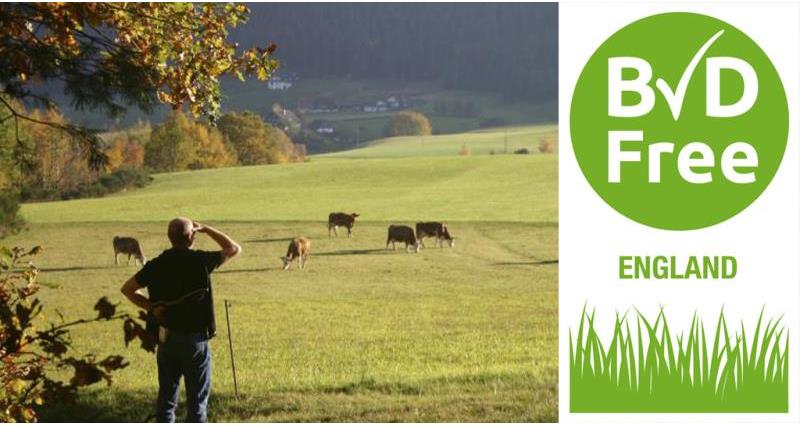The first step has been taken towards eliminating Bovine Viral Diarrhoea (BVD) from the English cattle herd thanks to a new industry initiative which is launched on 1 July.
BVDFree England is the first national scheme to target the elimination of the BVD virus from beef and dairy herds across the country. The scheme has been developed through an industry partnership with over 100 organisations pledging their support, including producer trade associations, unions and breed societies. A target has been set to have the majority of English cattle farmers signed up to BVDFree within the first 1,000 days.
Sign up to the BVDFree scheme online
Farmers that sign up online to the scheme agree to the BVDFree England Charter. They will also be able to access the BVD status of tested animals and herds, giving peace of mind that they won’t be buying in the BVD virus in purchased animals.
Once a farmer achieves BVD free status of the herd, they will be eligible to promote this, allowing their herd to be clearly differentiated in the market place against those farms not registered with the Scheme or herds without a BVD free status.
BVDFree England Charter
- To actively engage in BVD control in order to eliminate the disease from my herd.
- To report all BVD testing results from my herd to the national database.
- To allow herd status and/or individual animal statuses to be openly accessible through the BVDFree database (without any specific details of farm name or keeper shown).
- Not to move Persistently Infected (PI) animals other than directly to slaughter (or through a dedicated red slaughter market).
“Our ambition is to eliminate BVD in England and we encourage everyone involved in the cattle sector to own BVDFree and play their part in helping generate the momentum to engage farmers,” said Derek Armstrong, lead veterinary science expert at AHDB, one of the industry groups involved in coordinating the scheme.
“We are working closely with all elements of the livestock industry including the veterinary profession, science sector, Government and other links in the chain, such as laboratories and tag manufacturers.”
“‘Eliminating BVD will have significant benefits for producers as it will lead to healthier cattle and improved fertility,” said Andrew Cobner, vice president of the British Cattle Veterinary Association, which is supporting BVDFree England. “Indeed, countries where BVD eradication and control are established stand testament to that.”
Underpinning the BVDFree scheme is the commitment from farmers that, once cattle are identified as persistently infected (PI) with the virus, they will be removed from the herd and sent straight to slaughter. PI animals are responsible for churning out vast quantities of virus, infecting others in the herd and even passing it over fences to unsuspecting neighbouring farms.
“One of the most frustrating things about BVD is that PI animals often appear to be completely normal,” continued Derek.
“Testing is the only way to identify them and, until this is done, they can silently pass on this costly disease to every other bovine on the farm. Extensive research has shown that, within an infected herd, there is often no more than one or two PI animals for every 100 head of cattle.”
BVDFree will build on the solid work done by the Cattle Health Certification Standards organisation (CHeCS) by expanding the established core of herds that are already free from BVD.
More information about the scheme and how to register can be found at http://www.bvdfree.org.uk/. Twitter users can get involved by pledging their support for the scheme using #BVDFree.
More...
